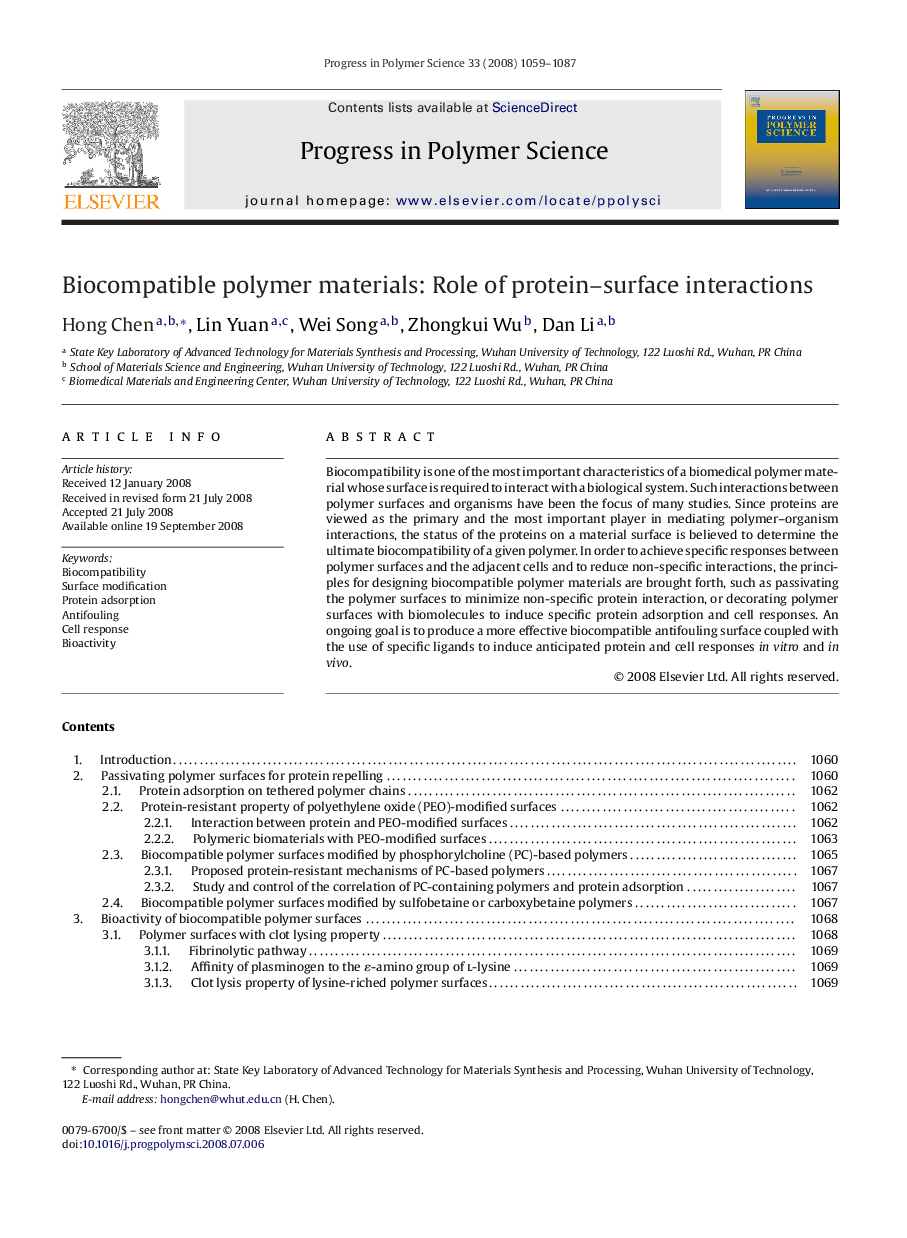| Article ID | Journal | Published Year | Pages | File Type |
|---|---|---|---|---|
| 5208978 | Progress in Polymer Science | 2008 | 29 Pages |
Biocompatibility is one of the most important characteristics of a biomedical polymer material whose surface is required to interact with a biological system. Such interactions between polymer surfaces and organisms have been the focus of many studies. Since proteins are viewed as the primary and the most important player in mediating polymer-organism interactions, the status of the proteins on a material surface is believed to determine the ultimate biocompatibility of a given polymer. In order to achieve specific responses between polymer surfaces and the adjacent cells and to reduce non-specific interactions, the principles for designing biocompatible polymer materials are brought forth, such as passivating the polymer surfaces to minimize non-specific protein interaction, or decorating polymer surfaces with biomolecules to induce specific protein adsorption and cell responses. An ongoing goal is to produce a more effective biocompatible antifouling surface coupled with the use of specific ligands to induce anticipated protein and cell responses in vitro and in vivo.
